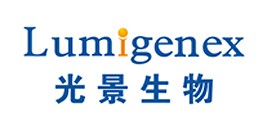Point of care testing (POCT) enables rapid diagnostic tests to be performed while a patient is at a PoC facility, without the need for complex equipment or a wait of hours to days for reports from outside labs. But desired POCT still needs to be precise, accurate, cost-effective and highly sensitive.
Although they have not completely replaced centralized testing facilities, nanobiosensors have started to reshape POCT conventions. Conventional POCT kits use colloid gold particles or colored latex particles and provide only qualitative and semiquantitative results. Their sensitivities are too low to be practical for detecting trace amounts of biomarkers in early stages of disease, which is a critical requirement for managing conditions such as acute myocardial infarction and heart failure.
The labeling technology used for quantification has an important role in keeping detection limits and accuracy at satisfactory levels. Although in vitro diagnostics companies have developed several POCT platforms with photoluminescence labels to provide quantitative measurements with reasonable sensitivity, other issues related to measuring photoluminescence need to be overcome to further improve the performance of these bioanalytical assays.
The two main issues are (1) autofluorescence from biological samples that increases the background fluorescence and compromises sensitivity and (2) light scattering and absorption by colored sample matrices, which can severely compromise measurements. Time-resolved luminescence labels provide one solution to both issues through time-gated measurements.
Compared with standard luminescence-detection methods that use wavelength to differentiate target luminescence from background signal, time-resolved luminescence techniques separate the luminescence of interest from the background signal by measuring the lifetime difference as well as wavelength difference. After excitation of a luminescent label with a short pulse of light, long-lived luminescence is measured only a short time after autofluorescence and light-scattering effects have completely dissipated. Such time-resolved measurements can be repeated and combined to fine-tune signal-to-noise ratios and improve sensitivity. Overall, time-resolved luminescence measurements increase the sensitivity by two or more orders of magnitude relative to conventional luminescence measurements in liquid samples.
Along with its proprietary luminescence encapsulation technique for obtaining strong and long-lived luminescence labels, Lumigenex has been able to successfully leverage its time-resolved luminescence membrane assay technique, exclusively licensed from Kimberly-Clark Corporation, to commercialize several POCT kits. For example, the detection limits of the company's Troponin I and N-terminal prohormone of brain natriuretic peptide (NT-proBNP) assays are 5pg and 4pg, respectively. Other ultrasensitive POCT kits using time-resolved luminescence technology are in development to meet the increasing demand for POCT kits for cardiology, women's health, infectious disease, oncology and drugs of abuse.


